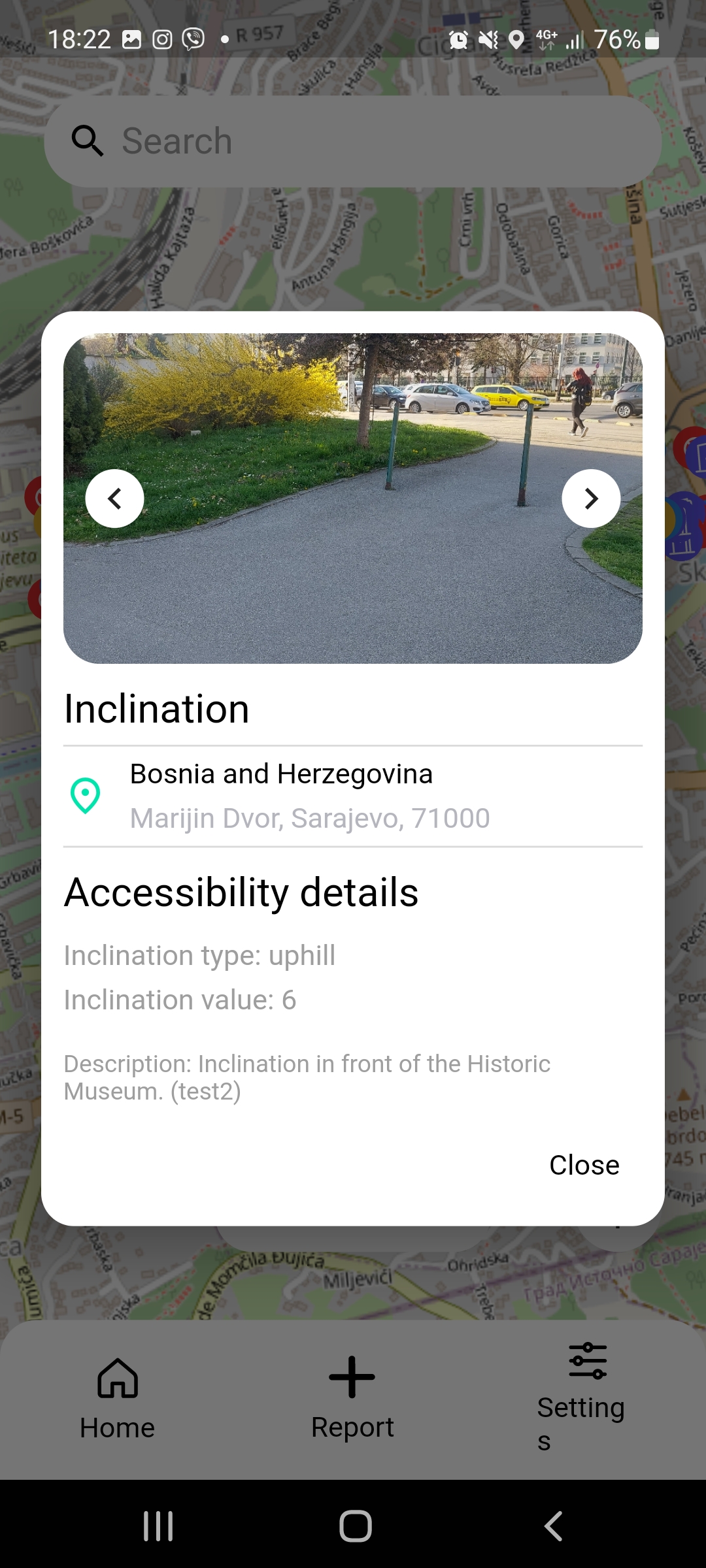Disclaimer:
Please be aware that the content herein has not been peer reviewed. It consists of personal reflections, insights, and learnings of the contributor(s). It may not be exhaustive, nor does it aim to be authoritative knowledge.
Learnings on your challenge
What are the top 5 key insights you generated about your frontier challenge during this Action Learning Plan?
Sarajevo, the capital of Bosnia and Herzegovina, is far from accessible, especially for people in a wheelchair. “Many buildings are not equipped with access ramps for persons with disabilities. Pavements in front of buildings are too narrow for a wheelchair or walking aids; door handles are not reachable; city transport has no ramps, insufficient lighting causes problems to people with poor sight….” Ena Kapetanović “Everything needed to be rebuilt to be accessible to everyone.” One mapper during the testing datamaphathon What takes 15 minutes to do could be hours for persons in a wheelchair (like planning to go to the cinema). Do not do a data mapathon just for the sake of doing a data mapathod; try to make it a learning experience for future architects or engineers or people who are going to be decision-makers in the future. Developing a complex application such as WeMapp takes time, so being a patient supporter is a plus.
Please paste the link(s) to the blog(s) that articulate the learnings on your frontier challenge.
https://www.undp.org/bosnia-herzegovina/stories/providing-better-conditions-people-disabilities
Did you experience any barriers or bottlenecks when impacting the system, working on your frontier challenge respectively?
Yes. Longer time for Ena Kapetanović, the innovator behind the WeMapp, and her team to develop the beta version of the app than initially planned. The final application is still in development which postponed the countrywide data maphaton for 2023.
For this frontier challenge, how much of your time did you dedicate to the stages in the learning cycle? Please make sure that your answers adds up to 100%.
Data and Methods
Relating to your types of data, why did you chose these? What gaps in available data were these addressing?
Geospatial data on obstacles for people with mobility difficulties in Sarajevo are non-existent; this is why WeMapp, an app that enables real-time crowd mapping of the physical barriers by providing information on obstacle type, inclination value, photos of the mapped obstacles and exact geolocations, is of very important for revealing the scale of the problem and influence necessary policy and urban planning changes.
Why was it necessary to apply the above innovation method on your frontier challenge? How did these help you to unpack the system?
:) Geospatial data on obstacles for people with mobility difficulties in Sarajevo are non-existent; this is why WeMapp, an app that enables real-time crowd mapping of the physical barriers by providing information on obstacle type, inclination value, photos of the mapped obstacles and exact geolocations, is of very important for revealing the scale of the problem and influence necessary policy and urban planning changes.
Partners
If applicable, what civil society organisations did you actually work with and what did you do with them?
N/A
If applicable, what academic partners (and related institutions) did you actually work with and what did you do with them?
Inspired by a similar experience from AccLab Ukraine, and to support the initial mapping efforts necessary to develop the application's logic further, the testing mapathon was conducted in April with the High School of Civil Engineering and Geodesy students in Sarajevo. The students successfully mapped over 150 obstacles in the center of Sarajevo through the testing application in one hour on the field. Their impression was that there were obstacles on each meter of the public space (streets, roads, public buildings, etc.) and that “everything needed to be rebuilt to be accessible to everyone”.
If applicable, what private sector partners did you actually work with and what did you do with them?
N/A
If applicable, what government partners (and related institutions) did you actually work with and what did you do with them?
N/A
Relating to your answers above: who of the partners listed were new and unusual partners for UNDP, and what made them special?
High School of Civil Engineering and Geodesy We were not working with them before.
If applicable, which UN internal partners did you actually work with and what did you do with them?
N/A
End
Bonus question: How did the interplay of innovation methods, new forms of data and unusual partners enable you to learn & generate insights, that otherwise you would have not been able to achieve?
Please upload any further supporting evidence / documents / data you have produced on your frontier challenge that showcase your learnings.
The closing form saves automatically or via the blue "save changes" button the top left. Thank you


 9Industry, innovation and infrastructure
9Industry, innovation and infrastructure 10Reduced innequalities
10Reduced innequalities
 11Sustainable cities and communities
11Sustainable cities and communities
Comments
Log in to add a comment or reply.